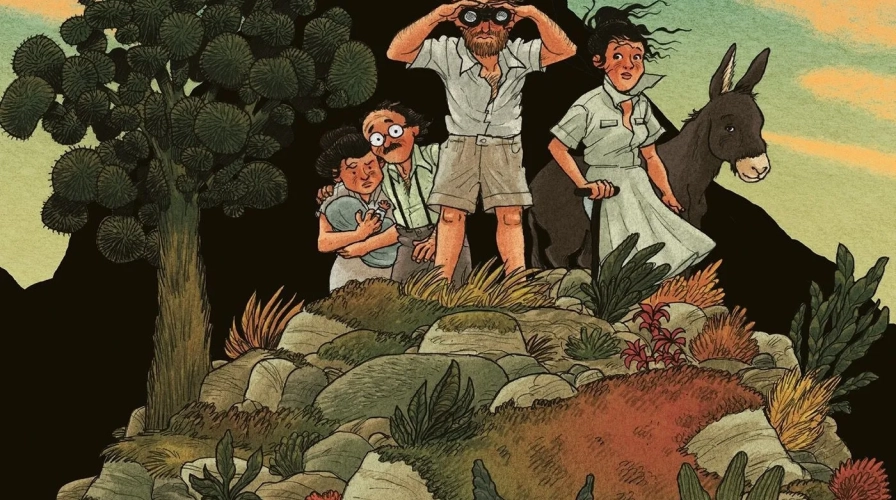Galápagos: A Riveting Tale of Isolation and Survival
Amid political turmoil in France and conflicts abroad, do you dream of escaping the world or living on a deserted island? Before making that leap, reading Galápagos might save you from a huge mistake.
An Incredible Adventure in the Galápagos
Writer, artist, and colorist Michaël Olbrechts begins his second book published in France with a prologue set in 1934. On a barren island, the crew of the ship Le Velero discovers a wrecked vessel with two unrecognizable, mummified bodies. The story begins with tragedy before moving chronologically through the events that led to the disaster.
The narrative shifts back to another deserted island in the Galápagos archipelago in 1929. Floreana Island appears as a paradise with lush flora and fauna. Friedrich Ritter and Dore Strauch arrive, leaving society behind. Friedrich, inspired by Nietzsche, dreams of becoming the philosopher’s "Übermensch." His ambitious quest stems from his experiences during World War I, and he sacrifices everything, including his marriage to Mila, for this vision. Dore, enamored with Friedrich’s dream, joins him to serve his ideals. Friedrich seeks self-sufficiency, rejecting societal norms, but the harsh environment quickly tests their resolve.
Their dream soon faces challenges. Dore struggles physically due to multiple sclerosis, and in 1932, Heinz Wittmer, influenced by media portrayals of this unique lifestyle, persuades his pregnant wife Margret to join them. Despite Friedrich’s opposition, the newcomers settle on the island. The tension escalates when the self-proclaimed baroness Eloise Wagner de Bousquet arrives with her two lovers, Rudolf and Robert. Armed and domineering, Eloise aims to claim Floreana as her own. The utopian dream spirals into a macabre and burlesque conflict, culminating in a descent into chaos and crime.

A True Story
The final pages reveal photographs of the main characters, confirming that Galápagos is based on a true story. Throughout the book, precise details—dates, names, and locations—are woven into the narrative. Friedrich’s solitary adventure attracted significant attention in his time, as he maintained a connection to Germany via a visiting ship. Articles about his life portrayed him and Dore as libertine savages, drawing curious spectators to observe their "return to origins."
With a background in history, Michaël Olbrechts was captivated by the intersection of these individuals’ stories and world history. He conducted extensive archival research, including images, survivor testimonies, period journals, and modern scientific studies of Floreana Island. The motivations behind the characters’ departures are deeply tied to Germany’s socio-economic context, including the 1929 economic crisis.
Olbrechts skillfully uses these personal struggles as the foundation for drama. The truth about the "Galápagos Affair" remains contested, as each survivor offered a different account. Rather than seeking historical accuracy, Olbrechts was drawn to these larger-than-life characters and the atmosphere of a vintage adventure film.
Olbrechts’ artwork contrasts with the dark themes of Galápagos. Rich in detail, especially when depicting animals, the illustrations celebrate the island’s natural beauty. The Robinsons’ attempts to tame nature are juxtaposed with panels that simply showcase the landscape’s magnificence. The watercolor palette, with its subtle shades and pencil-drawn shadows, is particularly striking.
With this compelling narrative, Michaël Olbrechts successfully bridges a graphic novel about a pivotal historical moment and a Franco-Belgian adventure comic featuring eccentric characters. Winner of the 2024 Fnac Graphic Novel Prize in Flanders and a commercial success, Galápagos is published by La Boîte à Bulles, a publisher known for acclaimed titles like Éléments de langage and Un chien hurlant.




Comments (0)